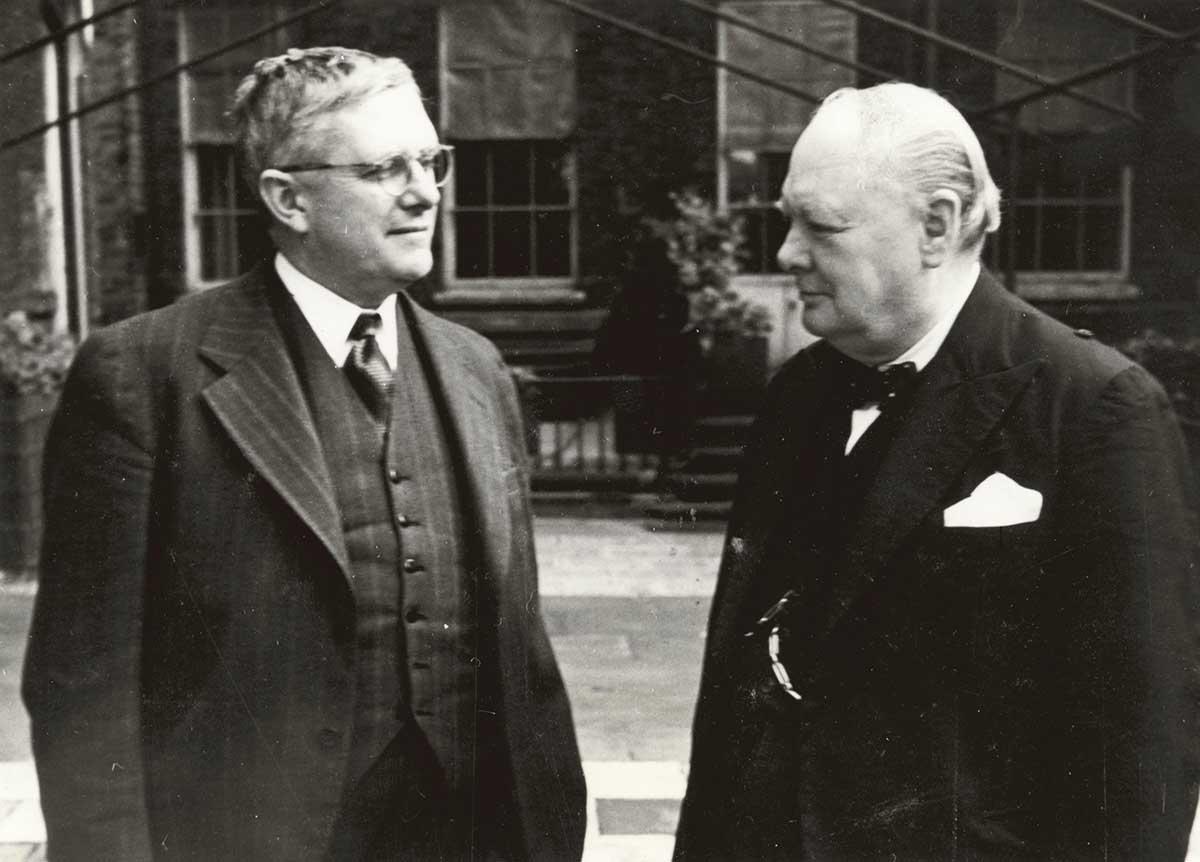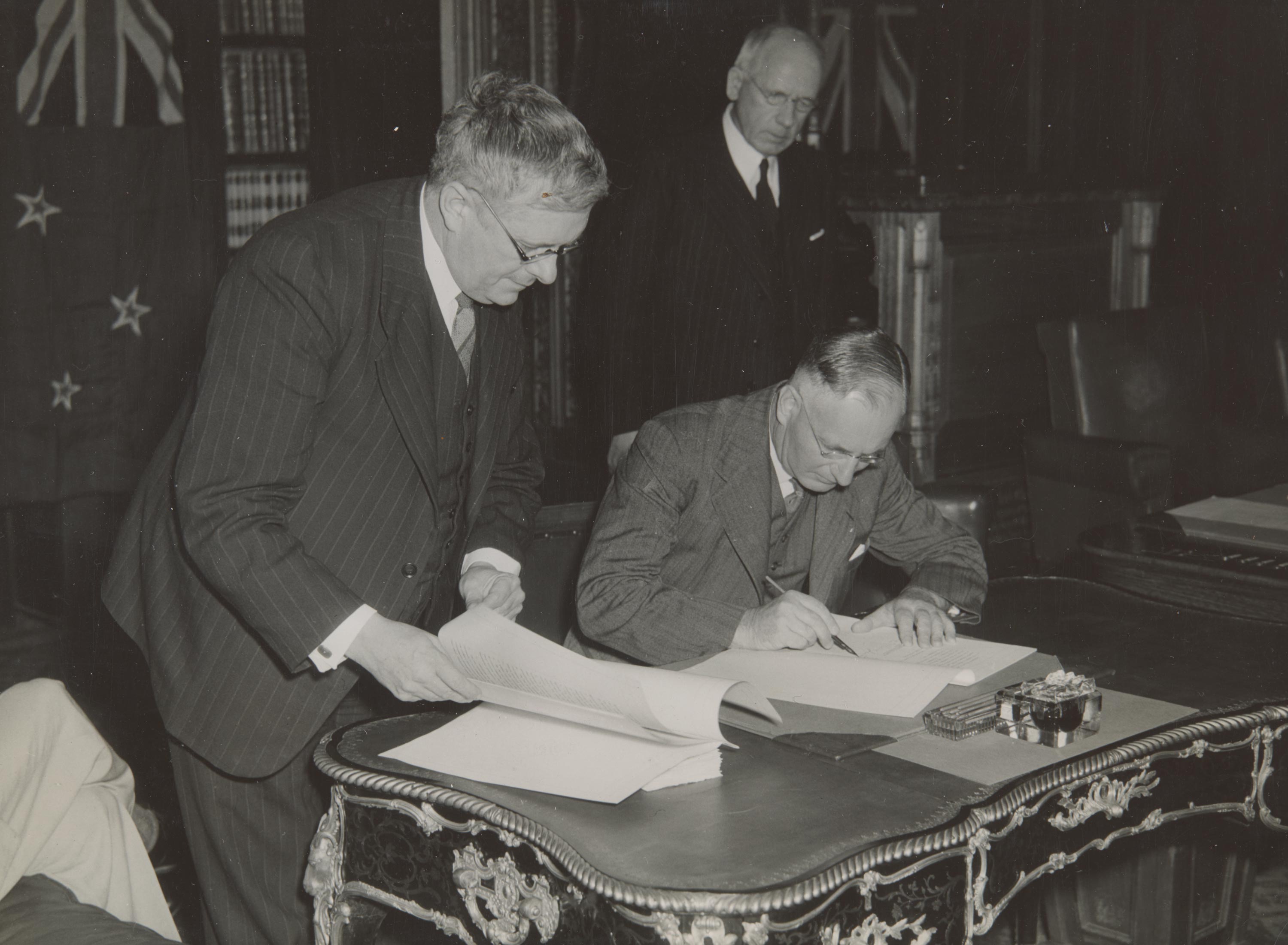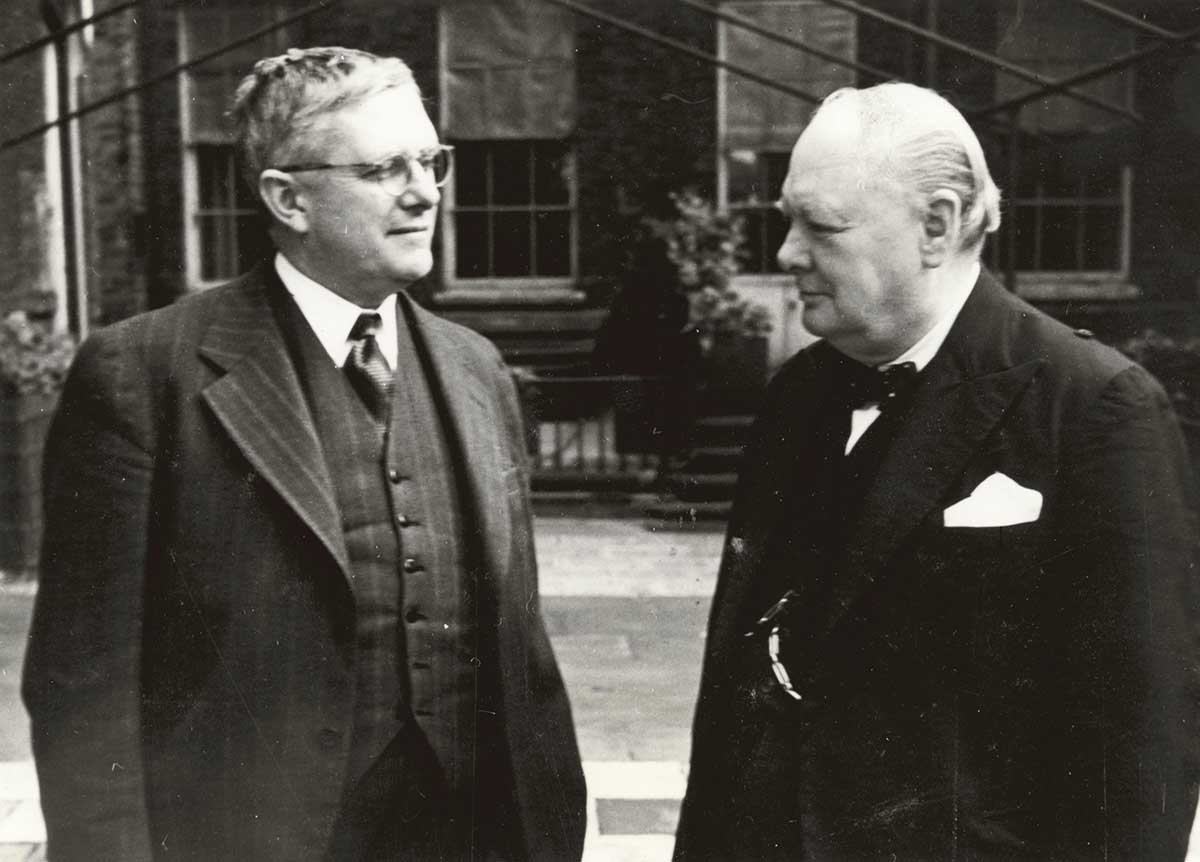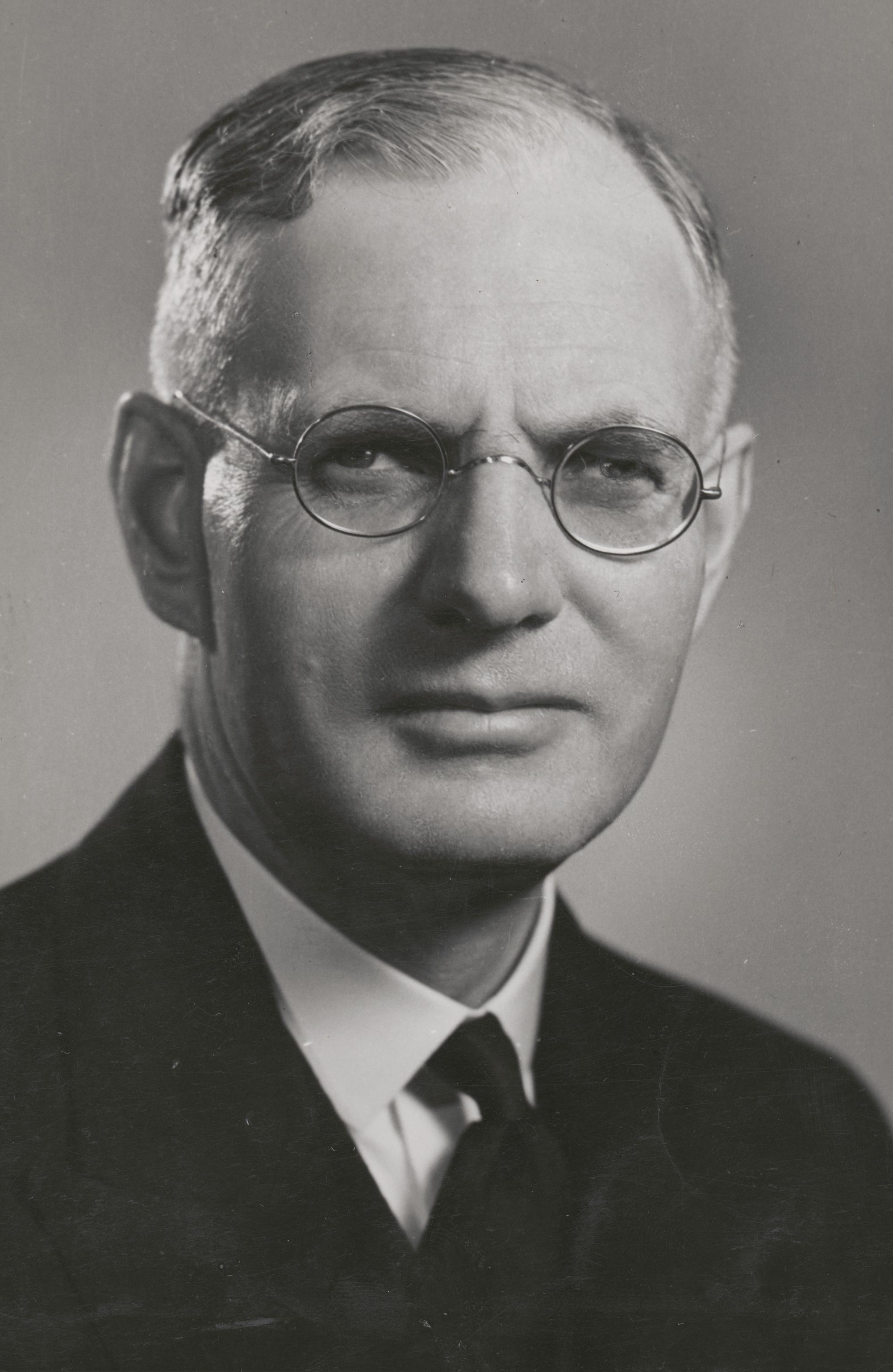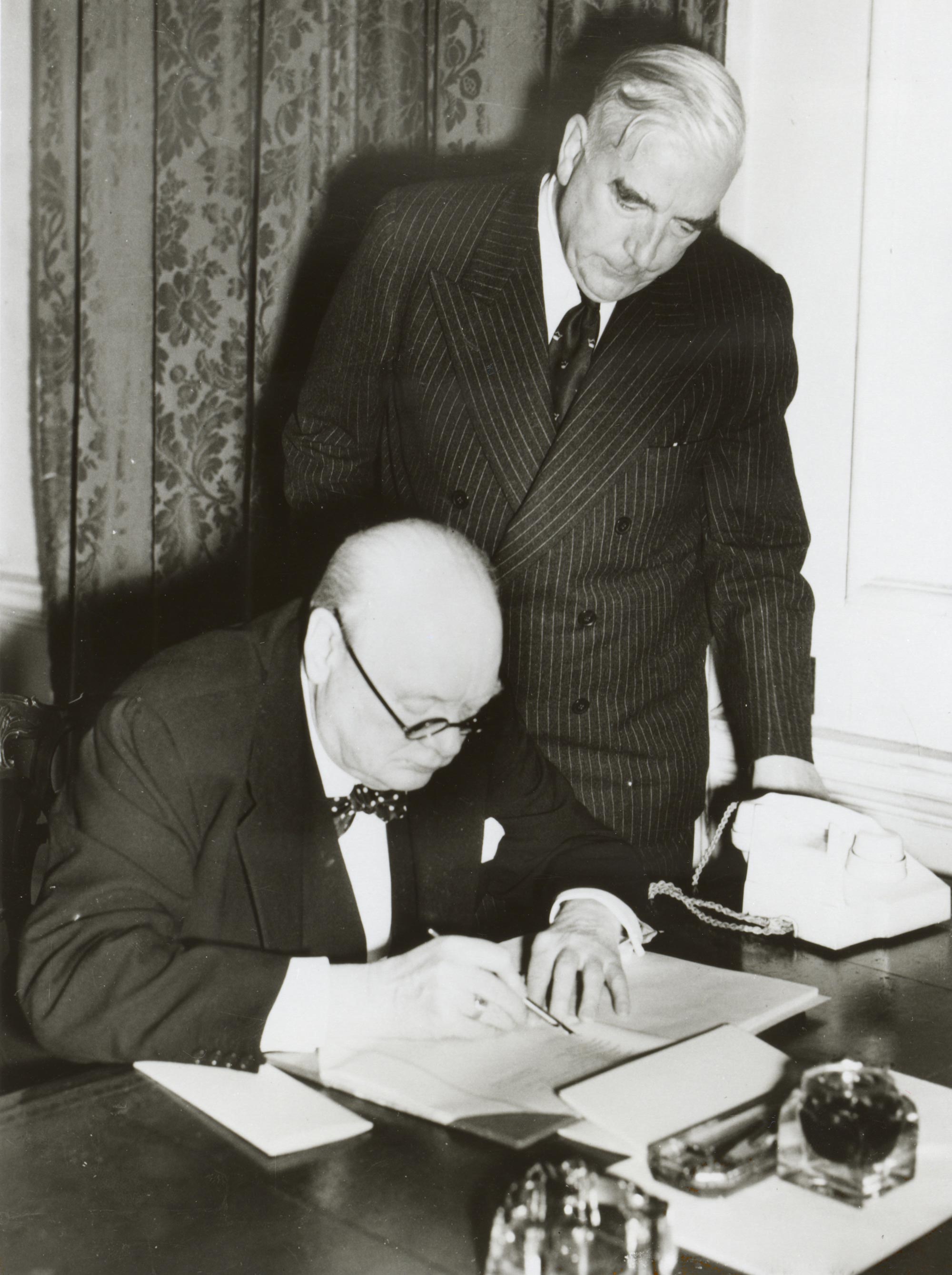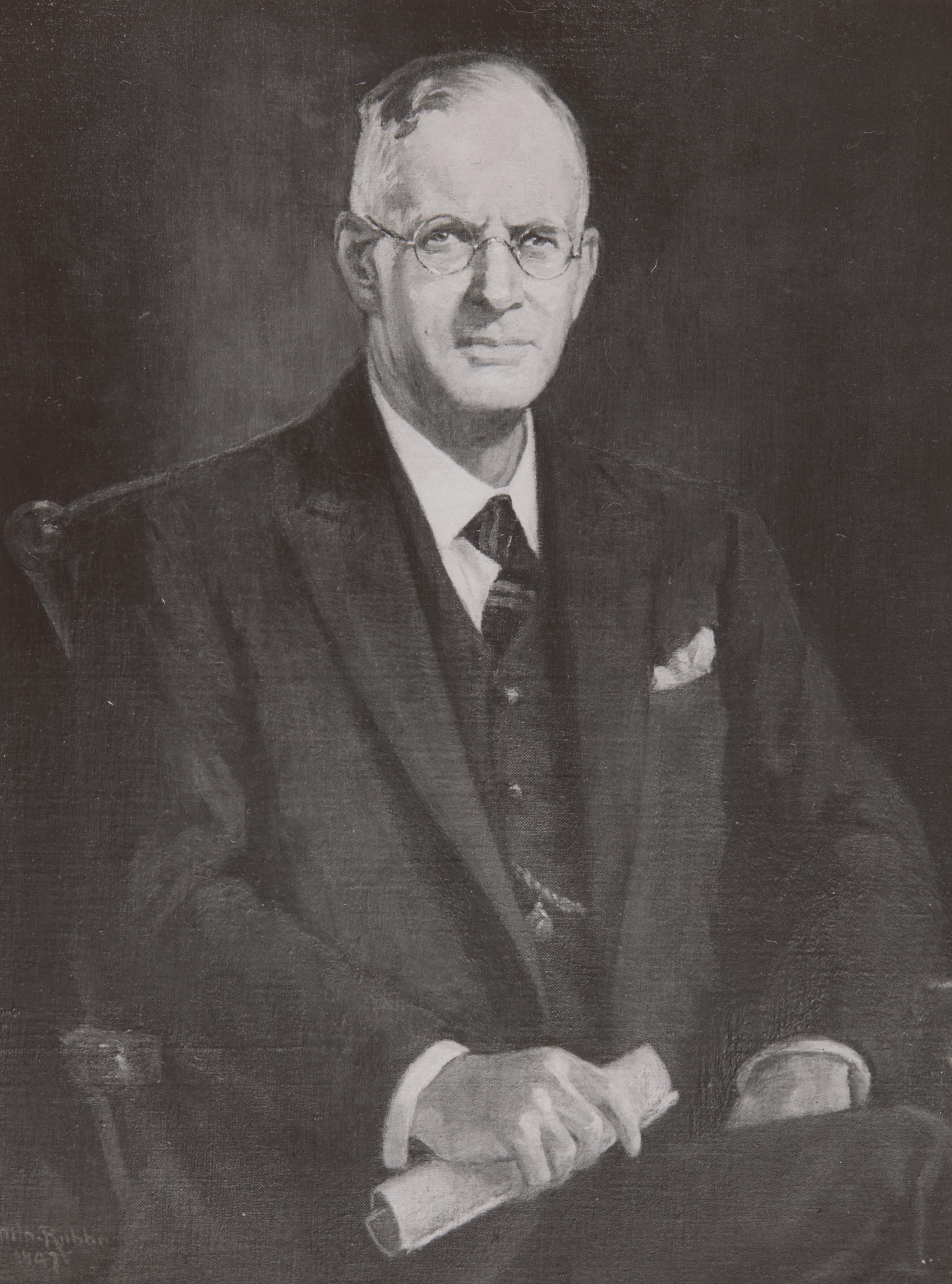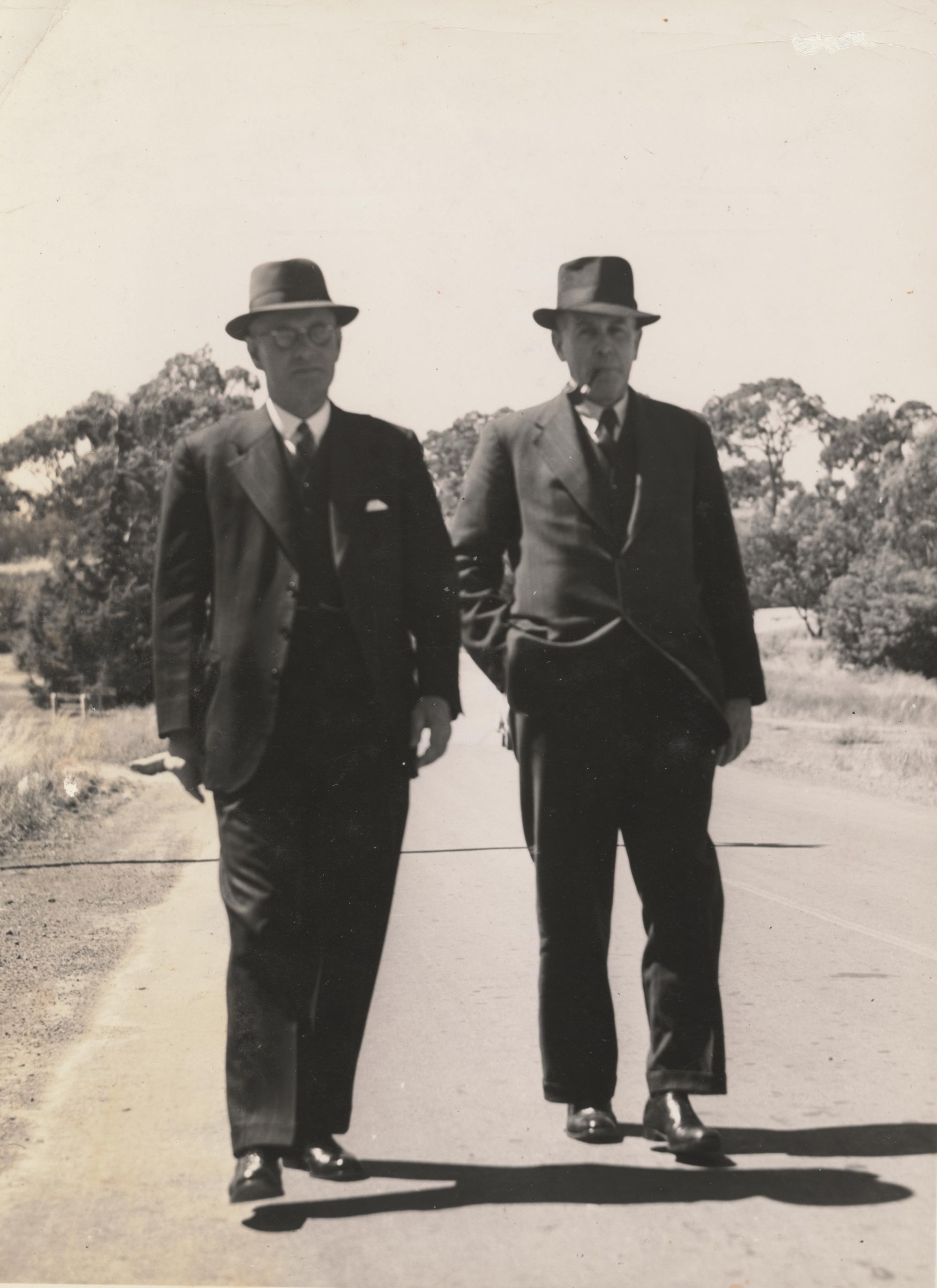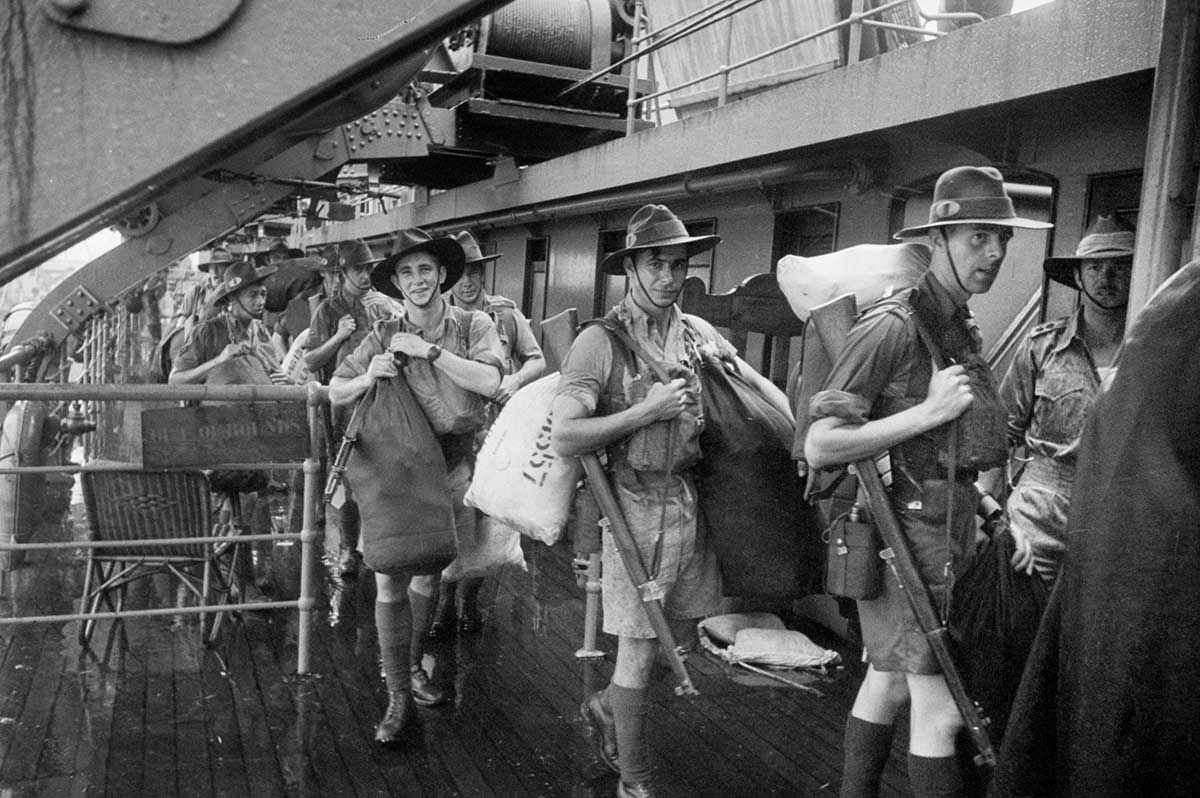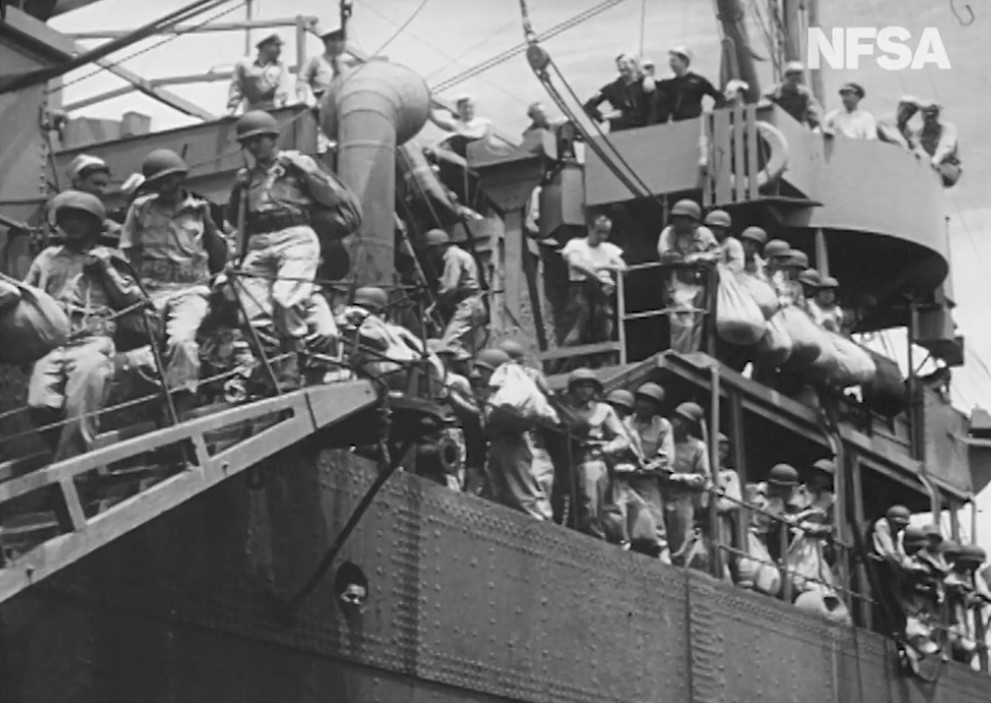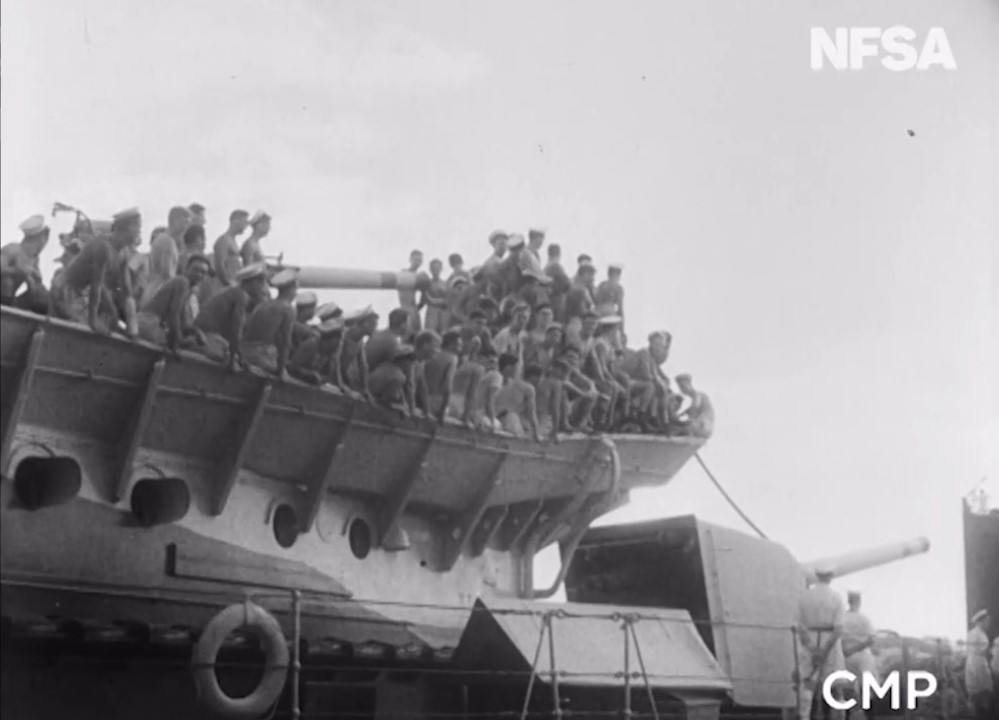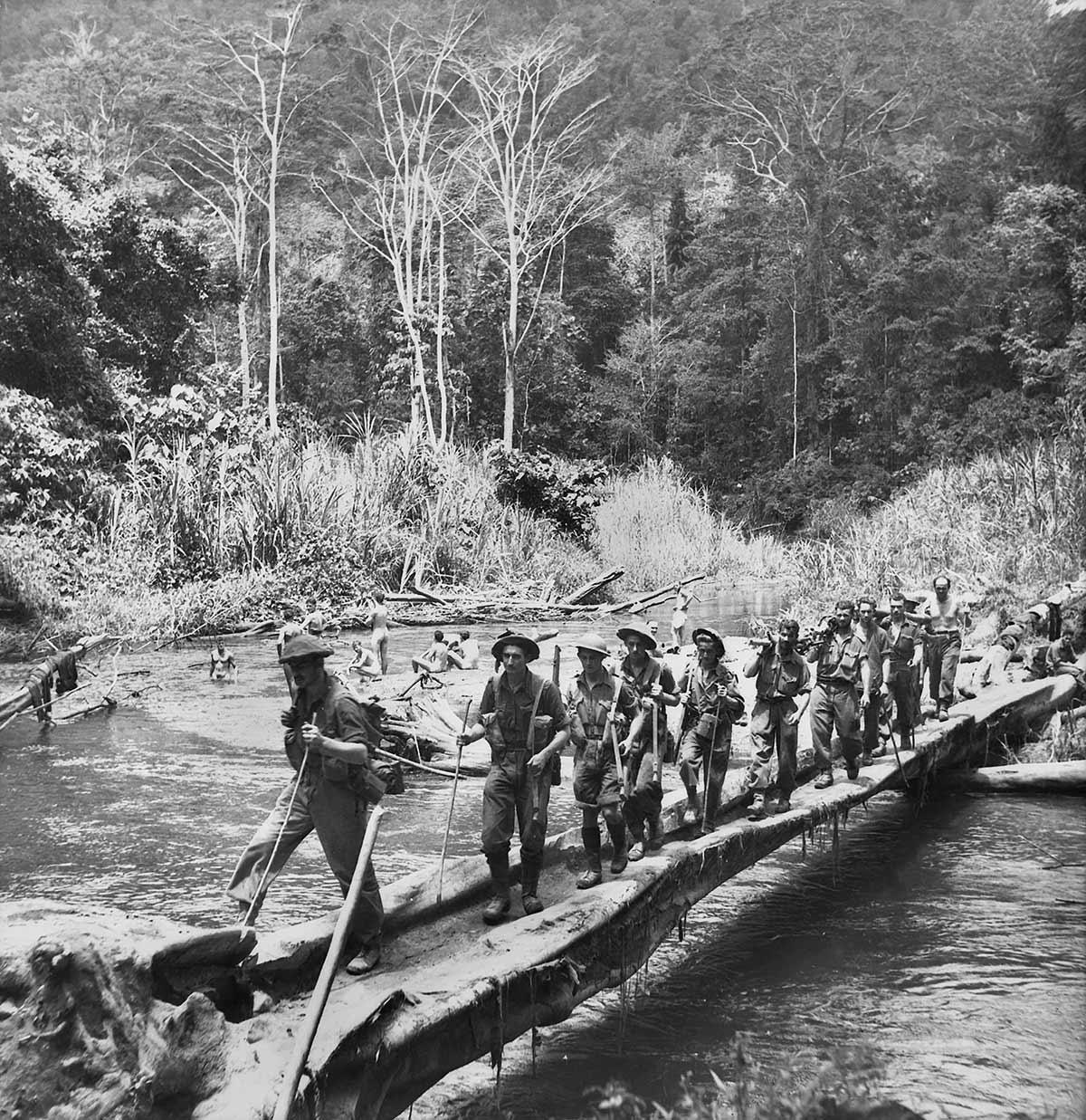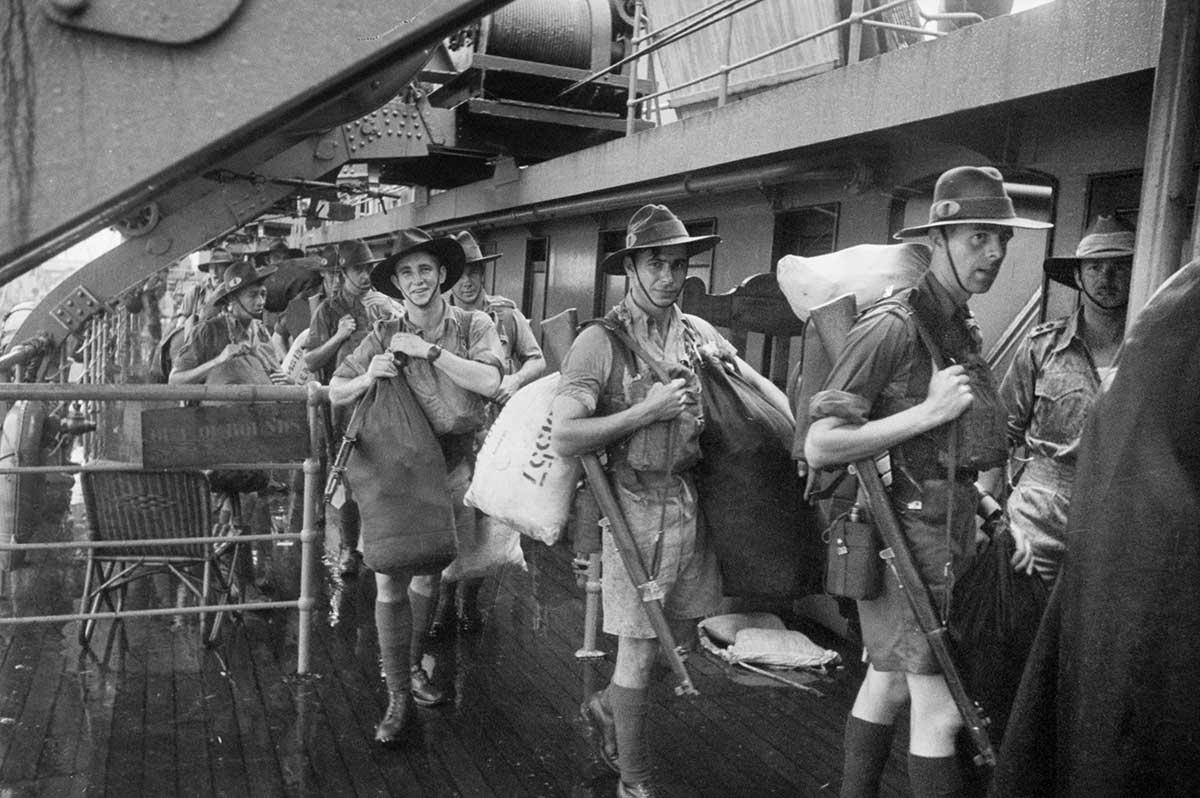Turning the tide in the Pacific
1942: Australian troops return to fight in the Pacific
Turning the tide in the Pacific
1942: Australian troops return to fight in the Pacific
In a snapshot
In February 1942 at the height of the Second World War, Singapore fell to Japan. The Japanese military then swept through southeast Asia and was preparing to invade the territories of Papua and New Guinea.
This led to an argument between British Prime Minister Winston Churchill and Australian Prime Minister John Curtin. Curtin believed some troops should be sent home to help defend Australia, while Churchill wanted the Australian troops to continue to fight in other parts of the world. In the end, Curtin brought the troops home. Shortly after these troops helped to stop the Japanese advance in the Territory of Papua.
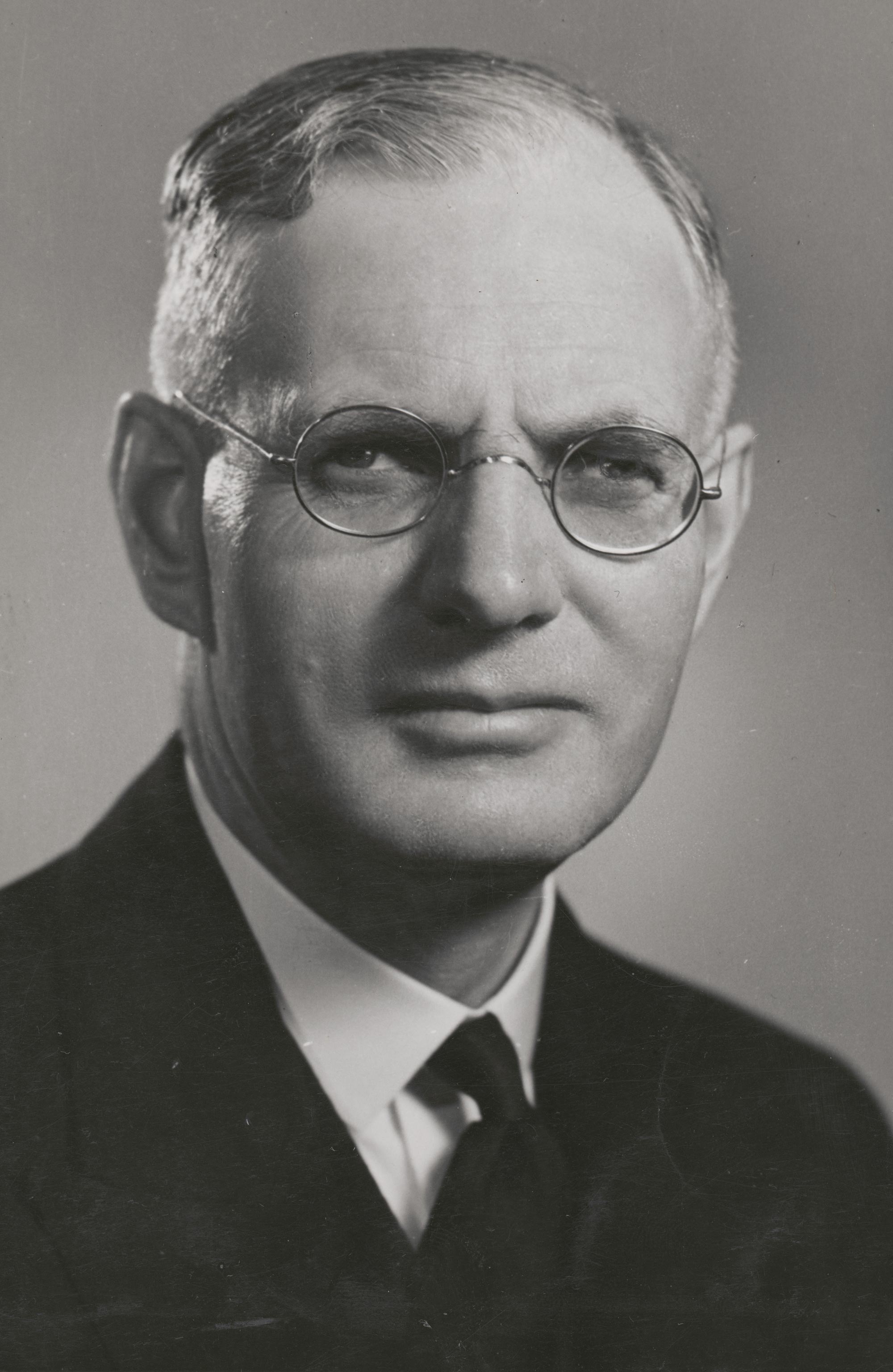
 Can you find out?
Can you find out?
1. What did Prime Minister John Curtin do on 26 December 1941 and why was this important?
2. Where did Winston Churchill want to send the Australian 7th division troops in February 1942?
3. In which important battles did the 7th division troops fight once they were allowed to return to the Pacific?
Where did Australians fight in the early stages of the Second World War?
The early stages of the Second World War were fought in Europe and the Middle East, and the 20,000-strong volunteer Second Australian Imperial Force (2nd AIF) was formed to fight overseas. The 2nd AIF fought through late 1940 and 1941 in the Western Desert in North Africa, Greece and the Syria–Lebanon campaign.
Who was John Curtin?
John Curtin became Prime Minister of a Labor government on 7 October 1941. Curtin had campaigned during the 1940 election that the ‘primary responsibility of any Australian Government was to ensure the security and integrity of its own soil and people before contributing to a common cause’.
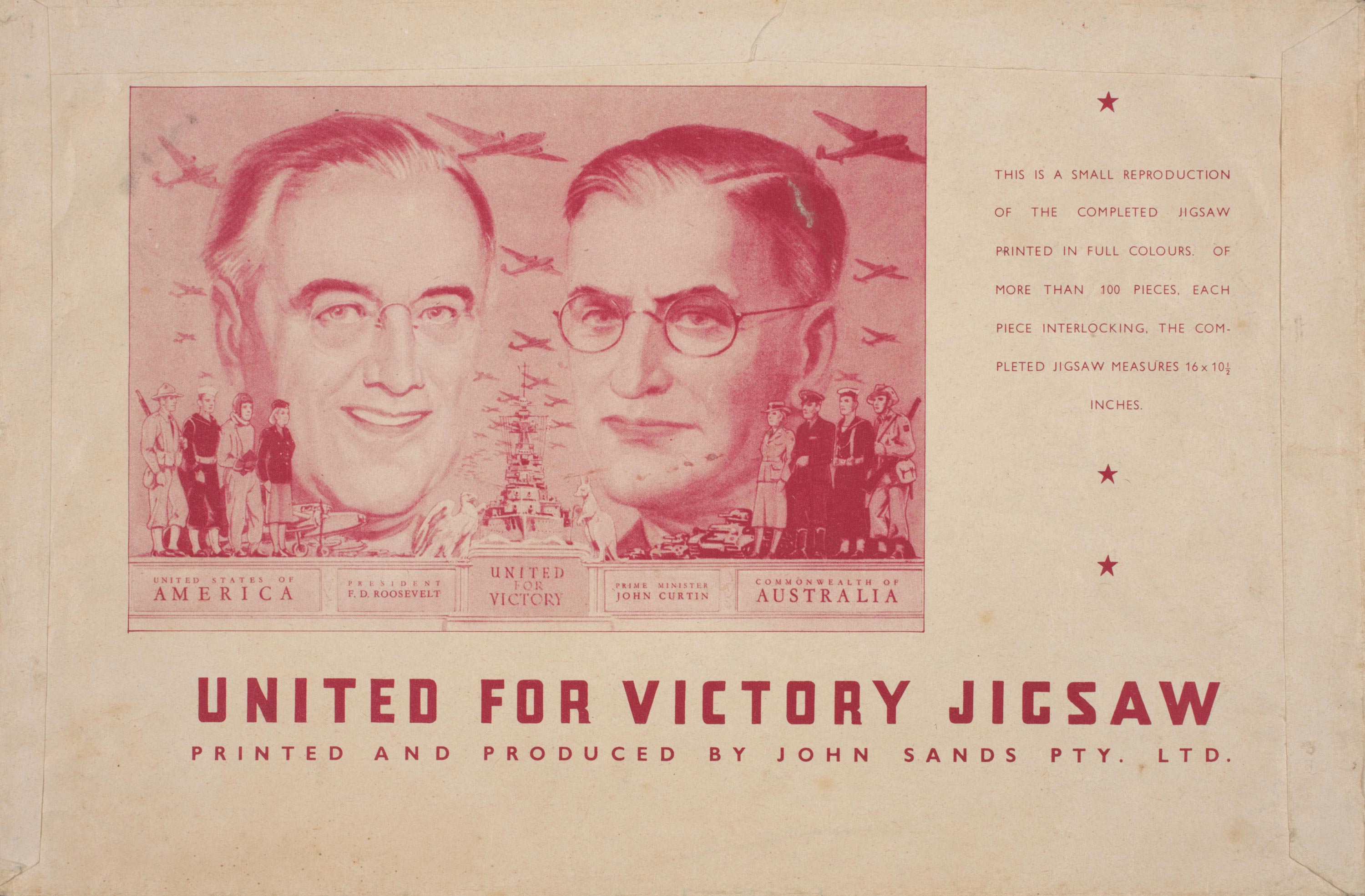
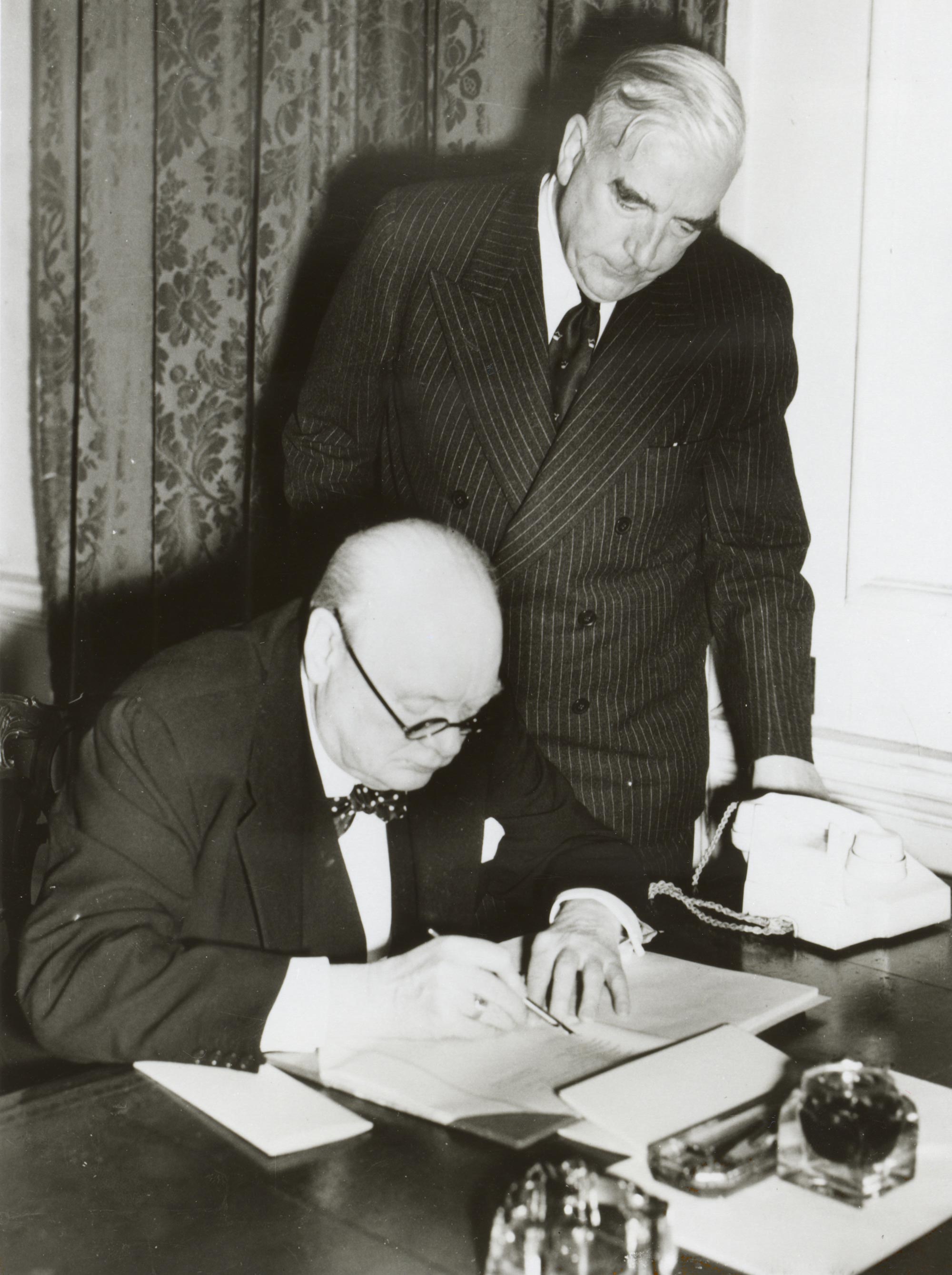
Why was the war with Japan important?
Japan attacked Pearl Harbor in Hawaii on 7 December 1941, which immediately led the United States and Great Britain to declare war on Japan. The next day Australia declared war on Japan, the first declaration of war Australia had ever made independently of Britain.
In his New Year’s message, given on the radio on 26 December 1941, Prime Minister Curtin announced that Australia would now align itself strongly with the United States of America. This clear move away from Great Britain greatly angered British Prime Minister Winston Churchill.
On 15 February 1942 Singapore fell to Japanese forces. At the same time the Australian 7th Division was sailing from the Middle East back to the Pacific to help in the fight against Japan.
‘Without any inhibitions of any kind, I make it quite clear that Australia looks to America, free of any pangs as to our traditional links or kinship with the United Kingdom.’
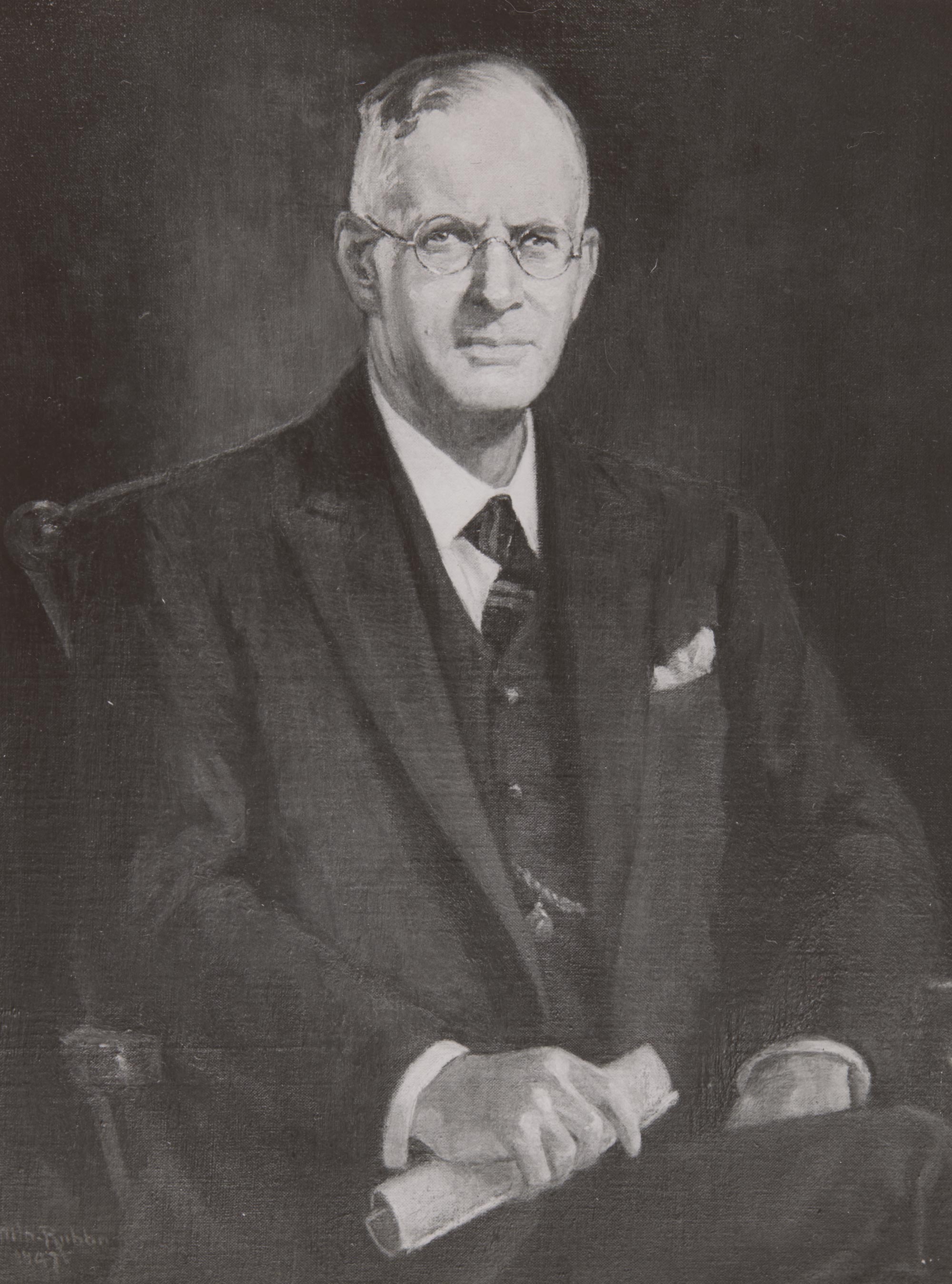
What happened when Curtin and Churchill clashed?
British Prime Minister Churchill argued that the 7th Division be sent to Burma as part of the British strategy to defend its colonies there. Curtin made it clear to Churchill that the Australian troops should immediately return to Australia. Churchill ignored Curtin and ordered that the troops be sent to Burma.
Finally, after some furious communications, Churchill backed down and allowed the ships to change course again to Australia. On 14 March 1942 Curtin gave a radio address to the people of the United States urging Americans to stand with Australia against the Japanese.
‘Australia is the last bastion between the west coast of America and the Japanese. If Australia goes, the Americas are wide open.’
Curtin’s decision as a defining moment
Soldiers from the Australian 7th Division were important in turning the tide against the Japanese advance. They fought in important battles at Milne Bay and on the Kokoda Trail, in the Territory of Papua.
Curtin’s insistence on bringing troops back to Australia, rather than fighting in a distant part of the British Empire, was important in moving Australia’s primary foreign policy allegiances from Britain to the United States.
Read a longer version of this Defining Moment on the National Museum of Australia’s website.
Research task
Do some research to find out why Burma was important to Great Britain, and why British Prime Minister Winston Churchill would want to divert Australian troops to defend it.
 What did you learn?
What did you learn?
1. What did Prime Minister John Curtin do on 26 December 1941 and why was this important?
2. Where did Winston Churchill want to send the Australian 7th division troops in February 1942?
3. In which important battles did the 7th division troops fight once they were allowed to return to the Pacific?






